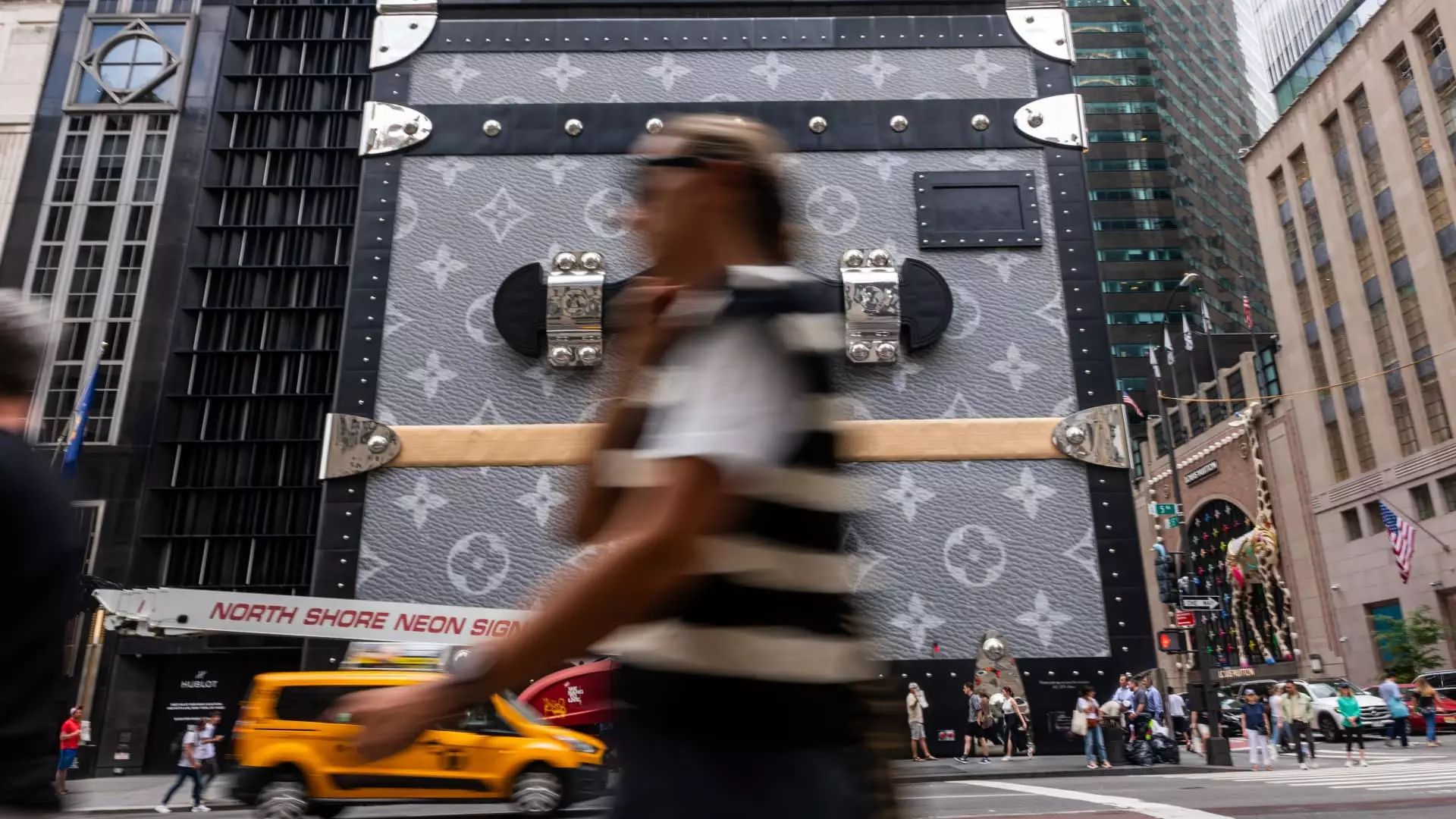Despite optimistic headlines, the so-called recovery in the luxury goods sector appears to be built on shaky ground. Major players like LVMH have reported only modest declines, and the overall picture remains clouded by a series of inconsistent signals. While certain sectors, like leather goods—particularly handbags—continue to outperform, this starkly contrasts with fragile segments such as jewelry and high-end watches, signaling an uneven and potentially unstable path forward. Investors’ recent enthusiasm, driven by brief glimmers of growth, might be premature if deeper structural issues remain unaddressed. Essentially, the luxury market’s resurgence is less a reflection of genuine consumer confidence and more a patchwork of temporary rebounds, often heavily influenced by external factors and strategic price adjustments.
Currency Fluctuations and Tourism: External Factors Mask Internal Realities
A significant portion of the current turbulence stems from exchange rate volatility and shifts in global tourism. The sharp decline of the Japanese yen temporarily spurred a tourist influx and elevated luxury sales in Japan, but this effect is now waning as the currency stabilizes and tourism diminishes. For brands operating in Japan, this reversion exposes their dependence on tourists rather than genuine local demand. Similarly, the rapid rebound in Chinese domestic consumption, perceived as a sign of resilience, may be more of a temporary reprieve than a sustainable trend. The underlying question is whether these shifts are mere responses to external shocks or signs of deeper, more enduring changes in consumer behavior. Relying on currency and tourist fluxes to mask internal shortfalls risks delaying necessary adaptations, which could prove costly in the long run.
Americas and the Tariffs Dilemma: Short-Term Gains or Long-Term Risks?
The United States emerges as a bright spot in the otherwise turbulent luxe landscape, with brands reporting increased sales—at least on paper. Yet, this uptick is likely driven by consumer behavior motivated by anticipated tariffs, which could distort true demand levels. Companies like Burberry and Richemont suggest their numbers are influenced by a pressing need for consumers to “frontload” purchases, a tactic that might not be sustainable once tariffs are fully implemented or become an even larger burden. This raises ethical questions about whether luxury brands are leveraging market fears to temporarily boost sales, rather than genuinely expanding their consumer base. Moreover, European brands face the looming threat of rising costs from tariffs, forcing them into a precarious cycle of price hikes that risk alienating price-sensitive consumers and eroding brand exclusivity.
Pricing Strategies and Cost Pressures: A Concerning Game of Inflation Tactics
The recurrent theme of price hikes highlights a fundamental dilemma: how to maintain margins without undermining consumer loyalty. While some brands openly admit to raising prices, many are treading carefully, suggesting that further increases may only occur alongside tangible improvements in product quality. Yet, the slow pace of price increases—only around 3% this year—is indicative of an industry wary of pushing consumers away. This cautious approach underscores the fragile nature of the luxury market, which is increasingly balancing on the fine line between perceived value and inflation-driven inflation. As input costs continue to climb, driven by inflation and supply chain pressures, luxury brands are faced with tough choices that could either bolster their exclusivity through strategic pricing or backfire and diminish their appeal among a broadening consumer demographic.
The Shifting Composition of Luxury Preferences
While some sectors, like jewelry, continue to demonstrate resilience, others reveal underlying vulnerabilities. Richemont’s strong position in jewelry contrasts with the softness in high-end watches, and even brands like Hermes are experiencing uneven demand within categories. Consumer tastes are evolving, and the allure of traditional luxury segments is waning in favor of more accessible, differentiated offerings. Brand appeal now hinges as much on marketing innovation and brand storytelling as on the products themselves. Hardly coincidentally, strategic shifts such as Kering’s product overhaul under Demna Gvasalia and Luca de Meo represent attempts to introduce fresh narratives that can rescue aging icons like Gucci. If brands fail to adapt swiftly and authentically, they risk losing relevance altogether in a world where luxury consumers are increasingly discerning and image-conscious.
Is the Luxury Market’s Hopeful Sentiment Just a Mirage?
The current narrative of a coming recovery hinges heavily on selective indicators and optimistic projections. While some industry insiders talk about “glimmers of hope,” this should not overshadow the systemic fragility rooted in economic, geopolitical, and consumer sentiment challenges. The luxury industry’s reliance on high-net-worth individuals, often insulated from economic downturns, is no guarantee of broader sustainability. As geopolitical tensions, inflationary pressures, and political uncertainties mount, the luxury sector could find itself vulnerable to a significant correction. The seeming rebound masks deeper issues—over-dependence on tourism, currency gamble, and price inflation—that threaten to undermine any short-term gains. The industry’s resilience depends less on superficial boosts and more on genuine adaptation to shifting global realities, not just optimistic forecasts.

